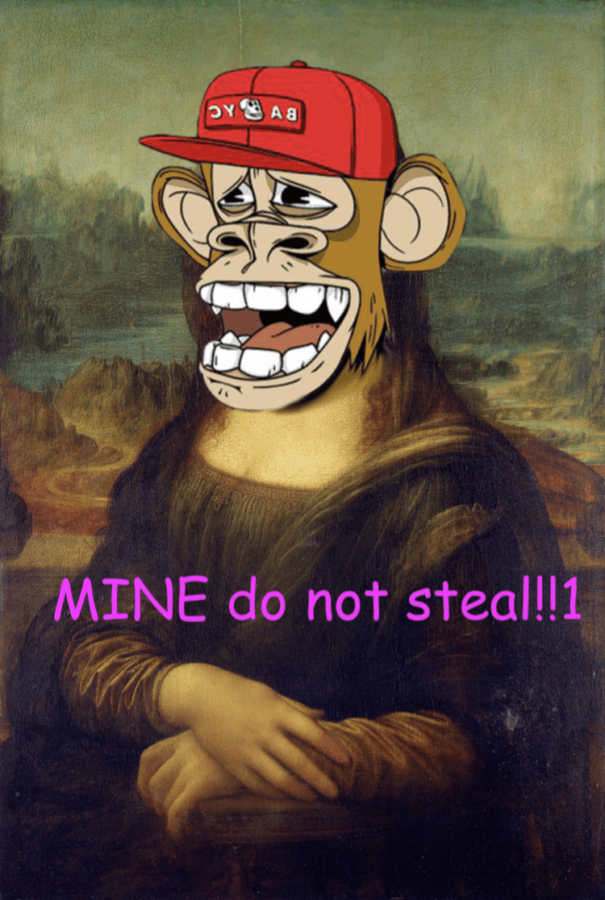What Is an NFT, and Why You Should Care?
May 22, 2022
Some people hate them, while others believe they are the future. On the Ethereum Blockchain and the Amazon wannabe, OpenSea, Non-Fungible Tokens (NFTs) are being solicited for massive sums of money, with prices surpassing the 33 million dollar mark. Despite this, anyone can make NFTs, regardless of their experience with art. Hence, it’s no surprise that in the past year alone, NFTs have become a cultural phenomenon. NFTs are the thing right now; people are looking towards the authenticity of this electronic art to impress others.
Upper School Visual Arts teacher and Director of Anne Reid ‘72 Galley Gwen Shockey describes an NFT as a “gif, a video, a short clip, some sort of digital creative expression that is coded to only be able to exist once and only to be owned solely by one owner.” She continues, “that’s where the term non-fungible comes in, meaning non-interchangeable.” Artists are currently selling their NFTs for millions of dollars, and musicians are selling NFT songs & audios. Brands like Burger King, the NBA, and Macy’s are making NFTs; the founder of Twitter even put an autographed tweet on sale as a NFT. So, NFTs can be anything in the digital space, including a photo or a song. Most people think an NFT is the actual digital file, when, in reality, an NFT is the records on the blockchain that stores the information of the digital file: who created it, who linked it to the blockchain, who bought it, and who owned it through its history. So, that begs the question: what is a blockchain? Simply put, a blockchain is a public record of transactions on the web.
At a very high level, most NFTs are part of the Ethereum blockchain; ethereum is a cryptocurrency like bitcoin. Ethereum users have an Ethereum wallet.
There is an ongoing debate about whether NFTs should be considered art. Middle School Art teacher Deva Leveillee speaks on the topic: “I think NFTs are capitalism. I want to sell something, and I want to make money.” She continues, “They’re just making stuff for other people, and I don’t think that’s what art is. I think that art is a direct reflection of the person.” In contrast, Ms. Shockey claims, “If whoever created it calls it art, it’s art as long as someone who’s seeing it also thinks it’s art, and that’s the case for everything.” In terms of how NFTs will impact the art market, Ms. Leveillee voices, “I think everyone is going to think they can do it.” Still, the era of NFTs has just begun. Only time will tell whether they are just a fad, or whether people will continue to make them for years to come.








